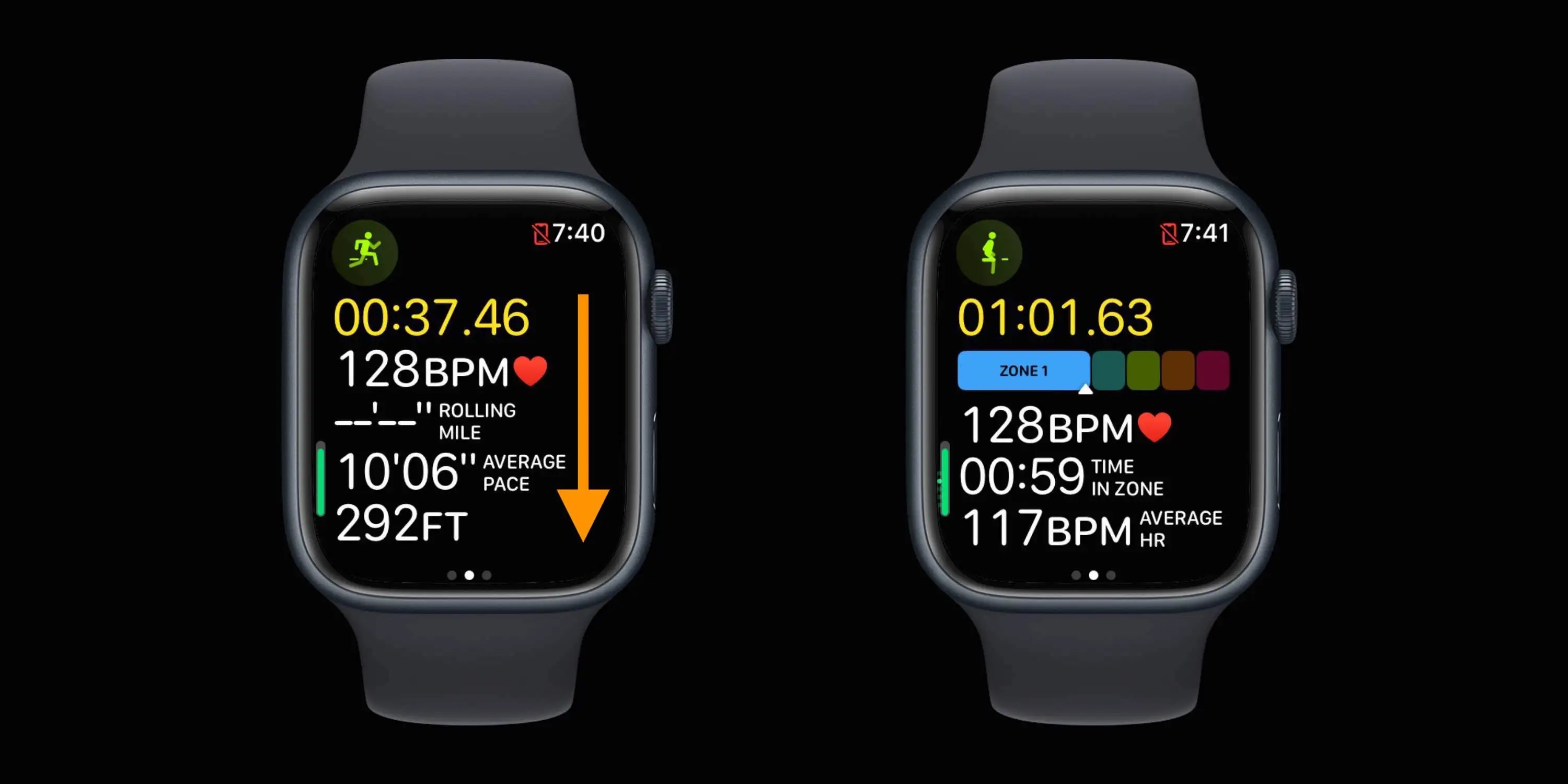Fitness
How to Keep the 'Ozempic Effect' Going: Exercise

FRIDAY, Feb. 23, 2024 (HealthDay News) — An open question for weight-loss drugs like Ozempic, Wegovy and Zepbound has been whether folks will keep the pounds off when they stop taking them.
Regular exercise could be the key to quitting the drugs without regaining weight, a new Danish study says.
“It is actually possible to stop taking the medication without large weight regain, if you follow a structured exercise regime,” said senior researcher Signe Sorensen Torekov, of the University of Copenhagen.
As little as a couple hours a week of exercise maintained the weight lost with the drugs, researchers found.
“Our study offers new hope, as we have shown that the majority of those who take weight-loss medication and exercise regularly are able to maintain the beneficial effects a year after treatment termination,” Torekov said in a university news release.
For the study, researchers recruited four groups of test participants.
One group was given a weight-loss drug, a second group was asked to exercise regularly and a third group was given the drug and asked to work out. The fourth group received a placebo.
The results showed that the exercise groups experienced an improvement in their quality of life. And those taking the drug while exercising kept the weight off once they quit the medication.
The new study was published Feb. 19 in the journal Lancet eClinical Medicine.
“All it takes is two hours of exercise a week that gets the heart rate up and makes you pant,” said lead researcher Simon Birk Kjær Jensen, a postdoctoral researcher at the University of Copenhagen.
“And it may differ from one person to the next,” Jensen added. “For people with severe obesity and low initial fitness level, a brisk walk may be sufficient, whereas people with higher fitness level may have to practice running or cycling.”
Based on this data, doctors should consider prescribing exercise along with weight-loss medications, to increase people’s chance of maintaining their weight loss.
“The study almost makes me want to advise against medical treatment without increased physical exercise, especially if you do not want to be taking the drugs for the rest of your life,” Torekov said. “The good news is that post-treatment weight loss maintenance is possible, but only when combined with exercise.”
More information
The Mayo Clinic has more about weight-loss drugs.
SOURCE: University of Copenhagen, news release, Feb. 20, 2024

Fitness
Fitness tips: The pros and cons of using incline on a treadmill

Fitness
Heart rate zones on Apple Watch and iPhone – 9to5Mac

A handy health and fitness feature with watchOS and iOS is the ability to see your heart rate zones on Apple Watch and iPhone. Read on for what they mean, how to see your max heart rate, manually edit your zones, and more.
Apple Watch and iPhone – with watchOS 9/iOS 16 and later – automatically create your five heart rate zones based on the Heart Rate Reserve method. Max and resting values are updated automatically on the first day of each month.
Here’s how Apple describes the feature:
“Heart Rate Zones are a percentage of your maximum heart rate and are automatically calculated and personalized using your health data. On Apple Watch, Heart Rate Zones are presented in five segments—effort levels from light to increasingly harder. By monitoring your Heart Rate Zone, you can make your workout more efficient and challenge yourself to improve your fitness.”
How to see heart rate zones on Apple Watch and iPhone
See heart rate zones during a workout
- Make sure you’re running watchOS 9 or later on Apple Watch and also have your birthdate entered in the Health app on iPhone
- Start a cardio-focused workout like a walk, run, or cycling (Apple hasn’t shared exactly which workout types include heart rate zones except for “cardio-focused” ones)
- Swipe down on the first Workout screen to see your heart rate and which zone it’s in

See heart rate zones after a workout
- After a workout, head to the Fitness app on iPhone to see heart rate zone data
- Choose a workout from the main Summary screen or tap the rings or Show More to pick a different date/workout
- Once you’ve picked a workout, swipe down until you see Heart Rate, tap Show More
Now you’ll see the breakdown of how much time you spent in each heart rate zone:

How to manually edit your heart rate zones
While the heart rate zones are automatically added based on your age, height, and weight, you can manually change them (usually for advanced athletes).
- Head to Settings > Workout > Heart Rate Zones on your Apple Watch and choose Manual at the top
- Or on iPhone go to the Apple Watch app > Workout > Heart Rate Zones then choose Manual at the top
How to see your max heart rate?
Going beyond your max heart rate is considered unsafe by medical professionals. To see your recommended maximum:
- Head to Settings > Workout > Heart Rate Zones on your Apple Watch, swipe down to find your max heart rate
- Or on iPhone go to the Apple Watch app > Workout > Heart Rate Zones, swipe down to find your max heart rate
What do heart rate zones mean?
Understanding your heart rate zones can be useful in a variety of ways. But some of the most practical applications are using heart rate training (properly rest or push yourself), targeting fat-burning or carb-burning heart rate zones, and awareness for those who have health conditions.
The Cleveland Clinic has a helpful article on understanding what kind of calories you’re burning in different zones. This won’t map directly to the five heart rate zones with Apple Watch, but is a good starting point.
Use your max heart rate (details on finding above) to figure out the numbers from the below calculations:
- Lower-intensity zone: You’re exercising at 50% to 60% of your max heart rate. At this point, 85% of the calories you burn are fat. The downside? You’re burning fewer calories overall than you would if you were exercising at a higher intensity. You’re generally able to sustain this zone the longest amount of time.
- Temperate zone: You’re exercising at 60% to 70% of your max heart rate. Roughly 65% of the calories you burn are fat.
- Aerobic zone: Working at 70% to 80% of your max heart rate puts you in the aerobic zone. About 45% of the calories you burn are fat. But you’re burning a higher number of overall calories compared to the other heart rate zones. You generally sustain this zone the shortest amount of time.
For heart rate training, the big idea is to “train your aerobic system without overstressing your skeletal and muscular systems, explains personal trainer Erin Carr.” Check out this article from Runner’s World for all the fine details:
Read more 9to5Mac tutorials:
FTC: We use income earning auto affiliate links. More.
Fitness
New fitness studio for Pilates-like exercise sweats it out in San Antonio

Things are looking a little brighter on the horizon for San Antonio: The city was recently named among the top 100 in U.S. News and World Report’s “Best Places to Live” list for 2024-2025.
Previously, San Antonio had shockingly plummeted out of the top 100 as No. 103 in the 2023-2024 rankings. But the latest report has placed the Alamo City at No. 89, suggesting substantial improvements over the last year.
U.S. News annually measures 150 top American cities for their livability, and ranks them based on four major indexes: quality of life, value, desirability, and job market.
San Antonio earned an overall score of 6.1 out of 10, with its quality of life and value scores at 6.1 and 6.8, respectively.
New for the 2024-2025 report, U.S. News updated its methodology to analyze city-based data rather than metropolitan area data. Secondly, the report’s annual survey newly placed greater weight on a city’s “value and job market” while “weights for desirability and quality of life took a slight dip” on the grading scale.
“Rising concerns about career prospects, housing affordability and increased cost of goods and services are reflected in this year’s rankings,” said U.S. News loans expert and reporter Erika Giovanetti in a press release. “While quality of life remains the top priority for many Americans, a city’s value and job market are becoming increasingly important for those looking for a place to live.”
There’s many factors that draw folks to San Antonio, among them the city’s top notch dining scene, the highly esteemed schools, and much more. San Antonio is also a great place for retirees looking to settle down without compromising on the big city lifestyle, and is surrounded by highly sought out welcoming suburbs. The city truly has something for everyone.
In an overview of the city, U.S. News said San Antonio is “as comfortable as an old pair of jeans.”
“[San Antonio] offers big-city amenities and world-renowned attractions coupled with a relaxed and inviting atmosphere,” U.S. News said. “The pace of life in San Antonio can be as active or as quiet as one chooses. Living in a destination city has its benefits.”
While San Antonio made big steps to improve in U.S. News’ national list, the city unfortunately sank in the report’s Best Place to Live in Texas list for 2024. The city dipped to No. 6 after previously scoring No. 2 in 2023.
Elsewhere in Texas
The recent focus on city-based data was likely a major factor that fueled San Antonio’s improvement in the national rankings, but it also favorably shifted nine other Texas cities.
Austin – which previously ranked No. 40 in last year’s rankings – became the only city to represent the Lone Star State among the top 10 best places to live in 2024. The Texas Capital jumped up 31 spots to claim No. 9 nationally, due to its “high desirability and job market scores,” the report said.
Three cities in the Rio Grande Valley also ranked higher than San Antonio, suggesting that South Texas may be a better place to live than south-central Texas. The border towns of McAllen (No. 48) and Brownsville (No. 87) climbed into the overall top 100 this year after formerly ranking No. 137 and No. 134 last year. Meanwhile, Corpus Christi moved up from No. 132 last year to No. 77 in 2024.
Here’s how other Texas cities faired in 2024’s Best Places to Live report:
- No. 62 – El Paso (up from No. 128 last year)
- No. 95 – Dallas (up from No. 113 last year)
- No. 97 – Houston (up from No. 140 last year)
- No. 99 – Beaumont (up from No. 131 last year)
- No. 107 – Killeen (up from No. 122 last year)
Naples, Florida took home the gold medal as the No. 1 best place to live in the U.S. in 2024. Rounding out the top five are Boise, Idaho (No. 2); Colorado Springs, Colorado (No. 3); Greenville, South Carolina (No. 4); and Charlotte, North Carolina (No. 5).
The full report and its methodology can be found on realestate.usnews.com.
-

 Politics1 week ago
Politics1 week agoTrump predicts 'jacked up' Biden at upcoming debates, blasts Bidenomics in battleground speech
-

 News1 week ago
News1 week agoA bloody nose, a last hurrah for friends, and more prom memories you shared with us
-
/cdn.vox-cdn.com/uploads/chorus_asset/file/24038601/acastro_STK109_microsoft_02.jpg)
/cdn.vox-cdn.com/uploads/chorus_asset/file/24038601/acastro_STK109_microsoft_02.jpg) Technology1 week ago
Technology1 week agoMicrosoft’s Surface AI event: news, rumors, and lots of Qualcomm laptops
-

 News1 week ago
News1 week agoVideo: A Student Protester Facing Disciplinary Action Has ‘No Regrets’
-

 Movie Reviews1 week ago
Movie Reviews1 week ago‘The Substance’ Review: An Excellent Demi Moore Helps Sustain Coralie Fargeat’s Stylish but Redundant Body Horror
-

 World1 week ago
World1 week agoIndia’s biggest election prize: Can the Gandhi family survive Modi?
-

 World1 week ago
World1 week agoPanic in Bishkek: Why were Pakistani students attacked in Kyrgyzstan?
-

 Finance1 week ago
Finance1 week agoSan Bernardino finance director claims she was fired after raising concerns about costly project






/cdn.vox-cdn.com/uploads/chorus_asset/file/23951362/STK072_VRG_Illo_N_Barclay_5_netflix.jpg)










